When you think of Sir Ridley Scott’s 1979 sci-fi horror film Alien, what is the first thing that springs to mind? It’s the Xenomorph, and there’s no doubting that these endoparasitoid extraterrestrial species are the most iconic movie creatures ever.
Of course, complete credit for the design of the Xenomorph should go to Swiss surrealist and artist H. R. Giger. Mind you, during this 42-year-old science fiction story, these creatures have had new avatars in almost every Alien film, each more horrific and creepy than the last.
In today’s video, we are going to explain in detail 17 different variants of Xenomorphsthat have appeared in the Alien franchise.
Big Chap (Alien, 1979)
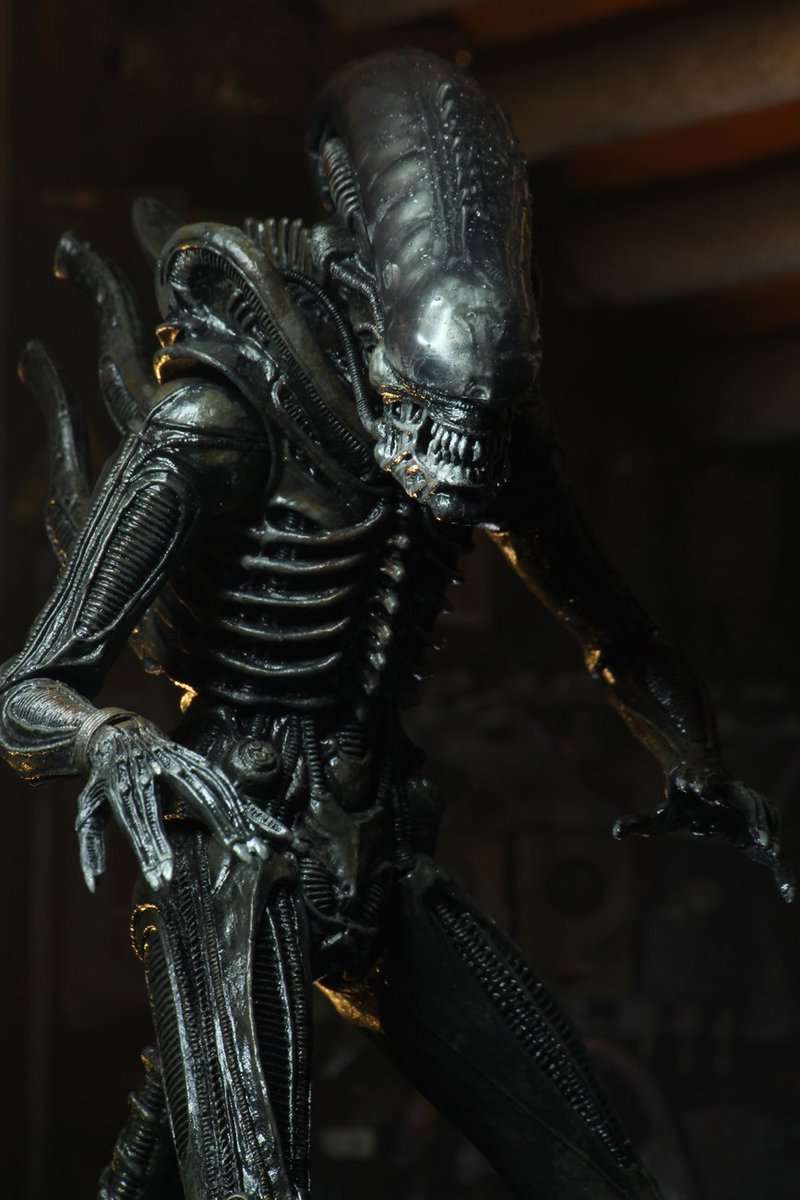
The original Xenomorph, often known as the Big Chap, is the one who started it all. You’ll be astonished to learn that this Xenomorph variation only gets about four minutes of screen time throughout the entire film. In fact, it’s not until nearly an hour into the movie that you see it for the first time.
It’s difficult to ignore it when it assaults one of the engineers, Samuel Brett, inside a landing leg compartment, puncturing his skull with a headbite and then escaping into the ventilation ducts with his body.
To those of you who are wondering what a headbite is, well, it is considered to be the alien’s signature method of killing prey. The creatures use their inner jaws to pierce through the victim’s skull, fatally destroying the brain with a force which is just unthinkable!
This particular Xenomorphis accountable for wiping out all but one of Nostromo’s crew just within a span of a few hours, and was eventually killed by Warrant Officer Ellen Ripley, who blasted the creature away into the depths of space.
Before settling on the final design, H. R. Giger created a number of concept paintings of the creature. The monster has a tail with a little barb-like point made out of plasticine and fused with elements we’re sure you’d never think of, such as snake vertebrae and cooling tubes from a Rolls-Royce.
Carlo Rambaldi, an Italian special effects artist, assisted Giger with the creature’s head in particular. The completed head comprised over 900 moving parts and articulation points, with a real human skull serving as the face hidden beneath the sleek, shininghead cover.
K-Y Jelly was used in large quantities to give the extraterrestrial a slimy appearance. Also, a latex costume was especially made for the 6 feet 10 inches Nigerian visual artist and actor, Bolaji Badejo, who brought Big Chapto life on screen. It’s even reported that the late actor took t’ai chi and mime classes in order to make the moves of the alien look more realistic.
But having said that, even though Badejo was given credit as the main Alien actor, there were scenes that demanded the creature to be played by stuntmen Eddie Powell and Roy Scammell.
Coming back to this particular variant of the Xenomorph, the fact that Giger suggested or rather insisted on the creature not having eyes, gave it an all the more unwelcoming appearance of a hostile, impassive beast.
Also, director Ridley Scott deliberately chose not to have the full creature on display, only parts of it, to augment the prevailing sense of dread and suspense. No wonder, The American Film Institute ranked this monster as the 14th best villain in American film history in their list of the 100 greatest heroes and villains.
It goes without saying that Big Chap truly stands apart from literally all of its future versions and it is precisely this terrifying creature that popularized the movie tagline, “In space, no one can hear you scream.”
Chestburster (Alien, 1979)
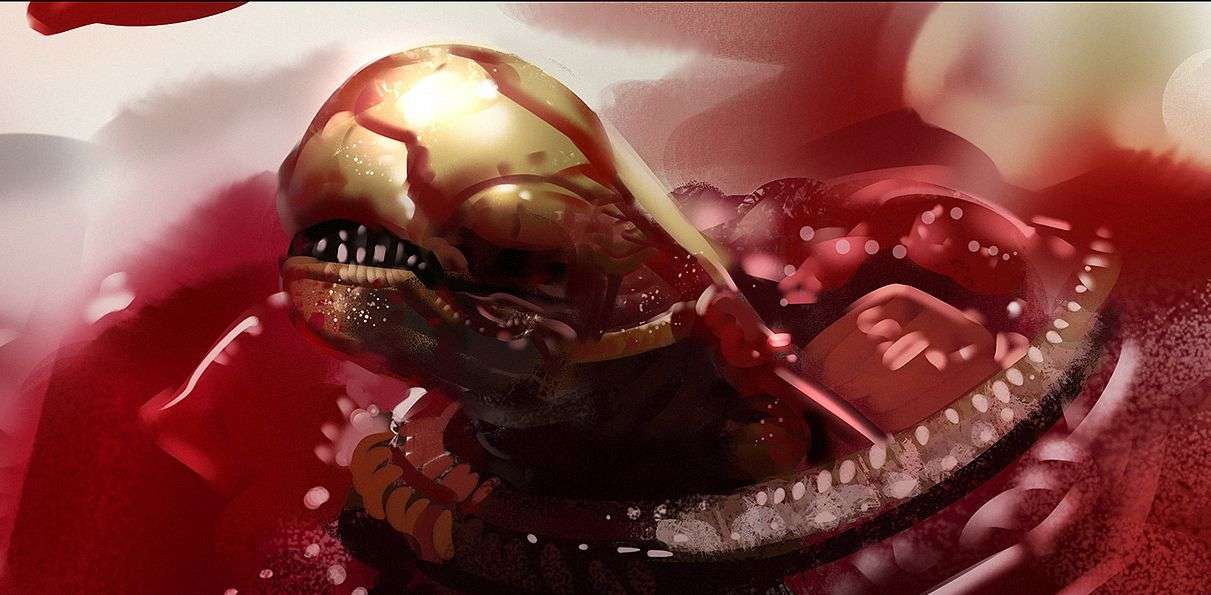
The infamous death of Officer Kane, where we get to see the first slimy little Xenomorph ruthlessly breaking out of his chest, is maybe the most iconic sequence not only in the 1979 film but also in the entire franchise.
The Chestburster is the outcome of a Facehugger implanting itself into a host and then trying to get out. It would not be incorrect to hold the creature responsible for one of the most bloody and gut-wrenching scenes not only in Alien, but throughout the whole genre.
Following the implantation by the Facehugger, the host eventually wakes up having no memory of what happened. Symptoms start occurring one by one; sore throat, increased congestion, nausea and also moderate to extreme hunger pangs.
The later stages where the incubation period is extended causes symptoms like exhaustion, shortness of breath, hemorrhaging and even chest pains. In the meantime, theChestburster inside draws nutrients from the body of the host to develop a placenta and start attaching itself to various major organs in the process.
Although there are no onscreen explanations as to the different incubation periods, the end result is usually the same, with the chestbuster violently and fatally ripping open the chest of the host.
What erupts from the body, though not even a foot tall, showcases vicious fangs, a misshapen bodyand a tail of course. Designed by Ridley Scott himself and created by special effects artist Roger Dicken, the Chestburster depicted in the original Alien movie is armless.
Remember the particular scene where Veronica Cartwright’s Lambert is seen screaming hysterically when the blood splatters on her? Well, her reaction was completely genuine; in fact, not just hers, but also the reactions of the other cast members!
The actors was kept in the dark about the final Chestburster’s design, and they were purposefully kept in the dark about the amount of blood that would come out or the heavy rain of animal entrails that would follow, allowing for the best and most authentic reactions to be captured on camera.
Also, the only reason 20th Century Fox picked up Dan O’Bannon and Ronald Shusett’s script was because of this terrifying Chestburster scene, so you can picture its impact even on paper! The sequence was even ranked second on Bravo’s list of The 100 Scariest Movie Moments in 2004.
Facehugger (Alien, 1979)
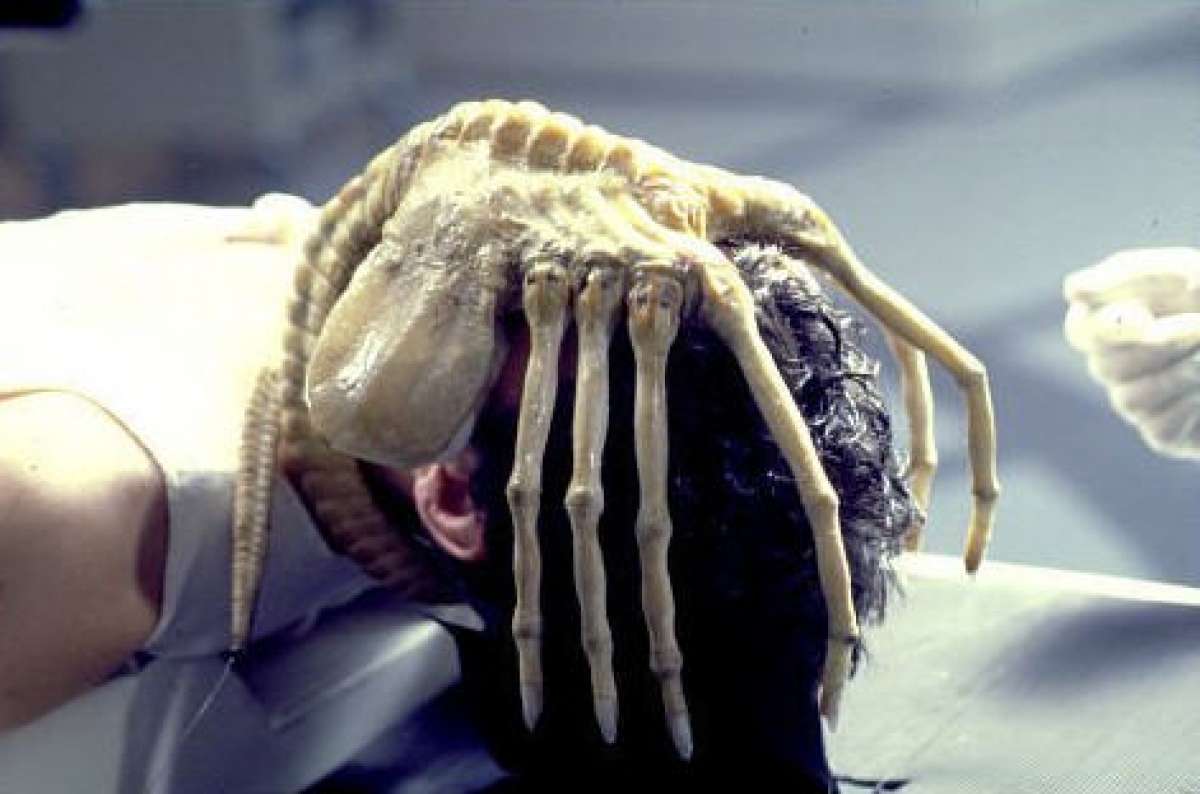
True to its name, this Xenomorphhas squid version monster suckers that will practically grip your face to death. The Facehugger is an alien that hatches from an egg and has eight long, finger-like legs that allow it to move quickly and a long tail that allows it to reach greater heights.
It’s more like a parasitoid whose whole aim in life is to contact the host, particularly their mouth. It can then begin the process of implantation by wrapping its legs around the victim’s head and hooking its tail over the host’s neck.
Upon contact, the Facehugger administers some kind of a cynose-based paralytic, leaving the host comatose, and then inserts an ovipositor down the throat of the hostto place the embryo.
The creature breathes for the host and any attempts to get rid of the Facehugger can prove quite fatal to them, with the creature responding by tightening its grip around their neck. Also, if you think you can simply cut off its finger-like legs, you will witness thespurting out of acidic blood and believe us you don’t want to do that.
Even the grip on the face is tight enough that if one tries to forcibly rip it off, there’s a high chance that the whole face of the host might just tear apart. Only after the alien embryo is implanted and secured with the Facehugger detach itself, crawl away and die eventually.The victim on the other hand, will wake up normally with no idea of the implantation.
These critters are crafty, and they are known to ambush their victims at inopportune times, such as when they are sidetracked, alone, or unsupported. A Facehugger also has the capacity to calculate how much acid is required to melt through the helmets and reach the target’s face without inflicting physical injury to the victim.
R. Giger experimented with many different forms in different sizes before settling on the final version, which was a little beige monster with skeleton hand-like legs and a long spine-like tail.
Giger initially wanted the Facehugger to cling on to the helmet of the victim but Scott eventually concluded that the impact would be much greater if the creature was revealed after the helmet was removed.
It was Dan O’Bannon who designed the Facehugger prop all by himself with Ron Cobb adding the technical elements of the muscular structure and the bones. Also, for the scene where the dead Facehugger is examined by Science Officer Ash, Scott used parts of fish and shellfish to make the internal organs of the body look all the more real.
Queen (Aliens, 1986)
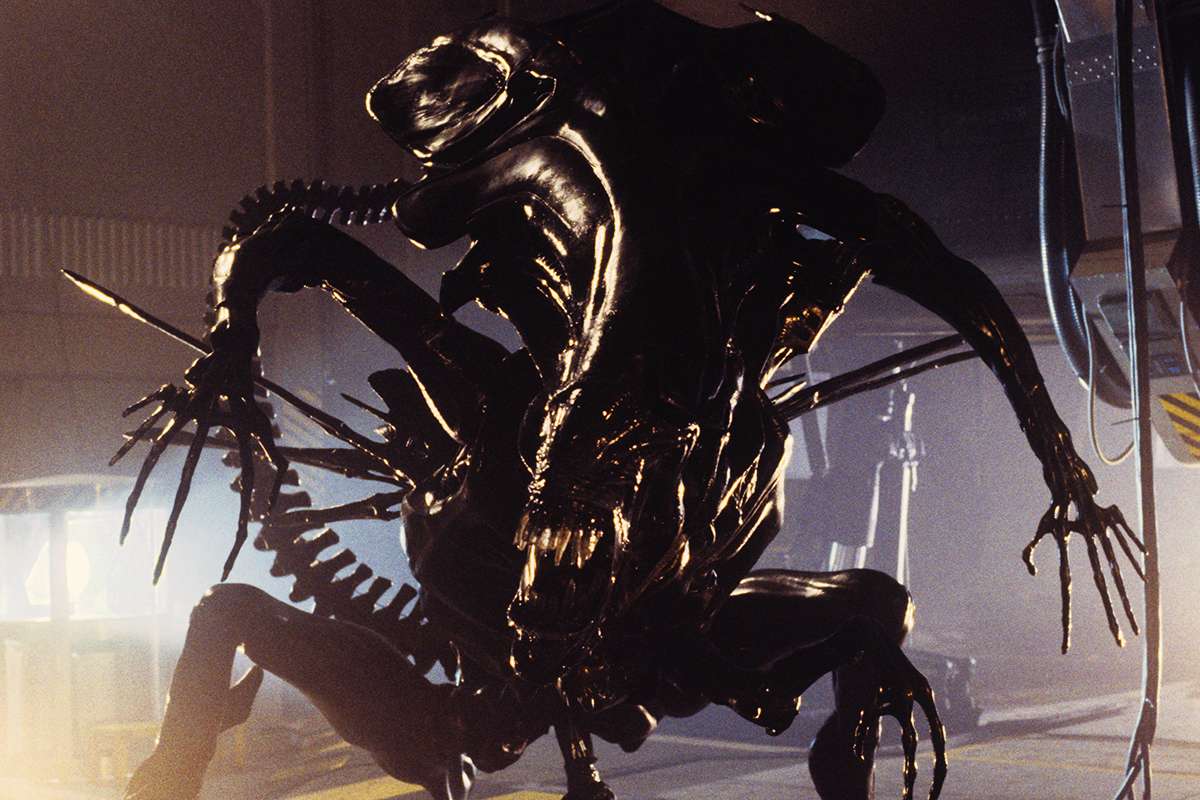
The Queen is the biggest and meanest of all the Xenomorphs, with a terrifying physical presence. She’s the one who lays the eggs that eventually turn into Xenomorphs, and she’s even at the top of the Xeno food chain, which makes her all the more terrifying and tough to deal with. The mama is shown as fiercely protective of her nest, incredibly intelligent, and terrifyingly powerful in James Cameron’s 1986 sci-fi action film Aliens.
During the early phases of the Hadley’s Hope Xenomorph infestation, one of the very first creatures to emerge from the early hosts evolved into a Queen and eventually built a Hive within the colony’s Atmospheric Processing Plant.
After she had completely grown, she started to lay her own eggs, sending her Drones to bring in the captive colonists to the Hive to act as hosts. The Queen is roughly about 15 feet tall, and has two pairs of arms – one larger than the other.
Her head has this massive carapace which looks more like a crown, her external mouth is distinctly segmented from the rest of her head,and there are high-heel protrusions from her feet. Let’s also not forget the immense ovipositor attached to her lower torso.
This unquestionable leader on LV-426 met her death at the hands of Ellen Ripley after the latter ejected her through an airlock into the space.
While the original Alien film left the origin of the eggs unclear, director James Cameron had things working in his favour when he introduced the viewers to the massive Alien Queen, who not only laid eggs but also served as the source of their life cycle.
Cameron even went so far as to design the Queen himself, working with special effects designer Stan Winston to produce a 14-foot puppet composed of lightweight polyurethane foam.
Two persons sat inside and controlled the arms; the legs were controlled by rods attached at the ankles, and the tail was moved around by a second person using a fishing line. The headwas a mix of servomotors and hydraulics thatwas managed by at least 4 people. No wonderthe movie won an Oscar for Visual Effects.
Smart Aliens (Alien Resurrection, 1997)
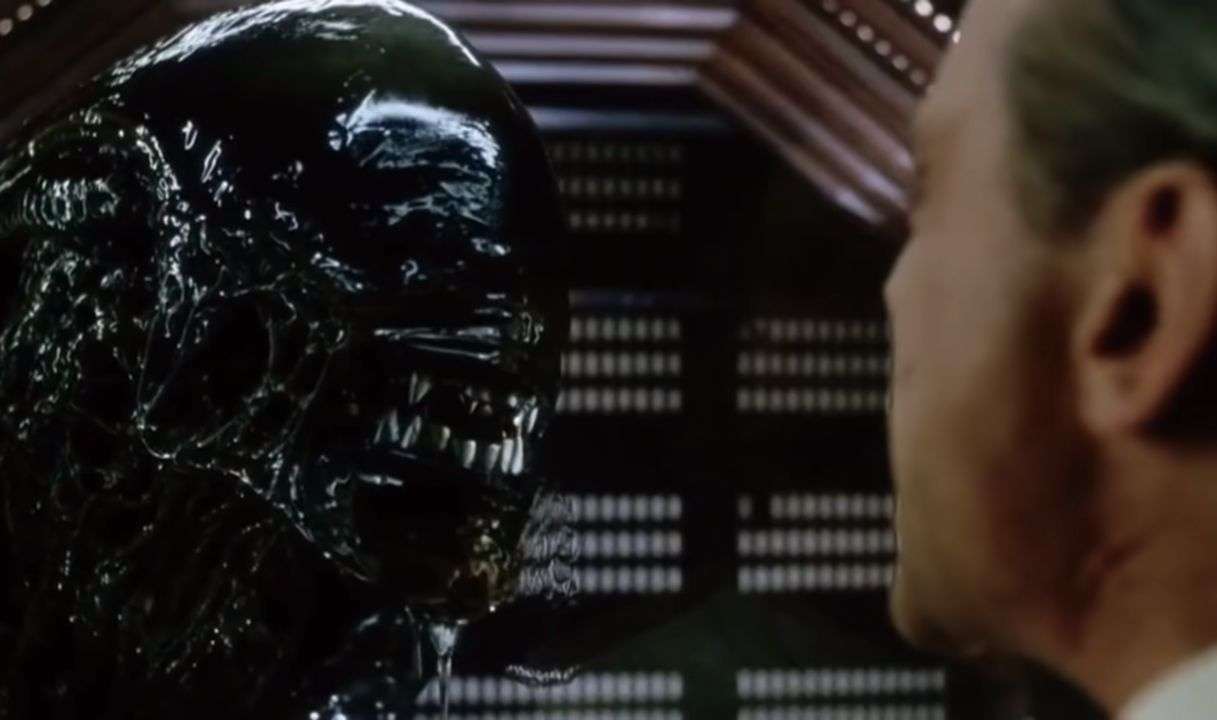
The Smart Aliens, also known as the Cloned Xenomorphs, are a modified strain of the Xenomorph XX121 produced in the year 2381 aboard the top-secret scientific research ship USM Auriga. These 7-foot-tall creatures originally debuted in Jean-Pierre Jeunet’s 1997 Alien Resurrection, the fourth instalment of the Alien saga.
Following the events on Fiorina “Fury” 161, blood samples of the deceased Ellen Ripley were taken from the planet and used as a part of an ambitious program to replicate her, in the hopes that the embryo of the Xenomorph Queen had been growing inside her at the time of her death.
After years of experimentation and seven failed attemptsleading to grotesque results, the program seemingly succeededand the Queen embryo was harvested aboard the USM Auriga.
The Cloned Xenomorphs were artificially created through means of genetic engineering but unbeknownst to the scientists, the DNA of the Xenomorphs and Ellen Ripley became mixed in the process thereby giving both the Ripley Clone and the Queen aberrant characteristics and skills, things which were eventually passed on by the Queen to her children.
Returning to these aliens, they resemble typical human-spawned Xenomorph Drones in appearance, but they also have some distinct differences due to their contaminated DNA.
For starters, their glossy green skin makes them appear more insect-like, and they have more fleshier necks, which makes their roar significantly superior to that of conventional aliens. Their bodies are largely quadrupedal, and their tails, which consist of a flat ridge of spines at the base of the blades, make them excellent swimmers.
Unlike the regular Xenomorphs, the Smart Aliens are remarkably capable of breeding at high speed; no wonder Auriga eventually is overwhelmed by them. Battering down steel doors, ripping apart metal grates and floors all with just their hands, spitting acid purposely on the victim’s faces to blind them, and even dodging bullets and fire, these creatures are quite something.
Are you still perplexed as to why they’re referred to as Smart Aliens? They are, after all, violent and cunning. They can truly solve problems – remember how they were able to break out from their containment cages by killing one of their own and using their acidic blood to burn through the barriers? Their capacity to grasp things extremely instantly and even construct traps for their prey is truly incredible.
Bellybursters (Alien vs. Predator: Requiem, 2007)
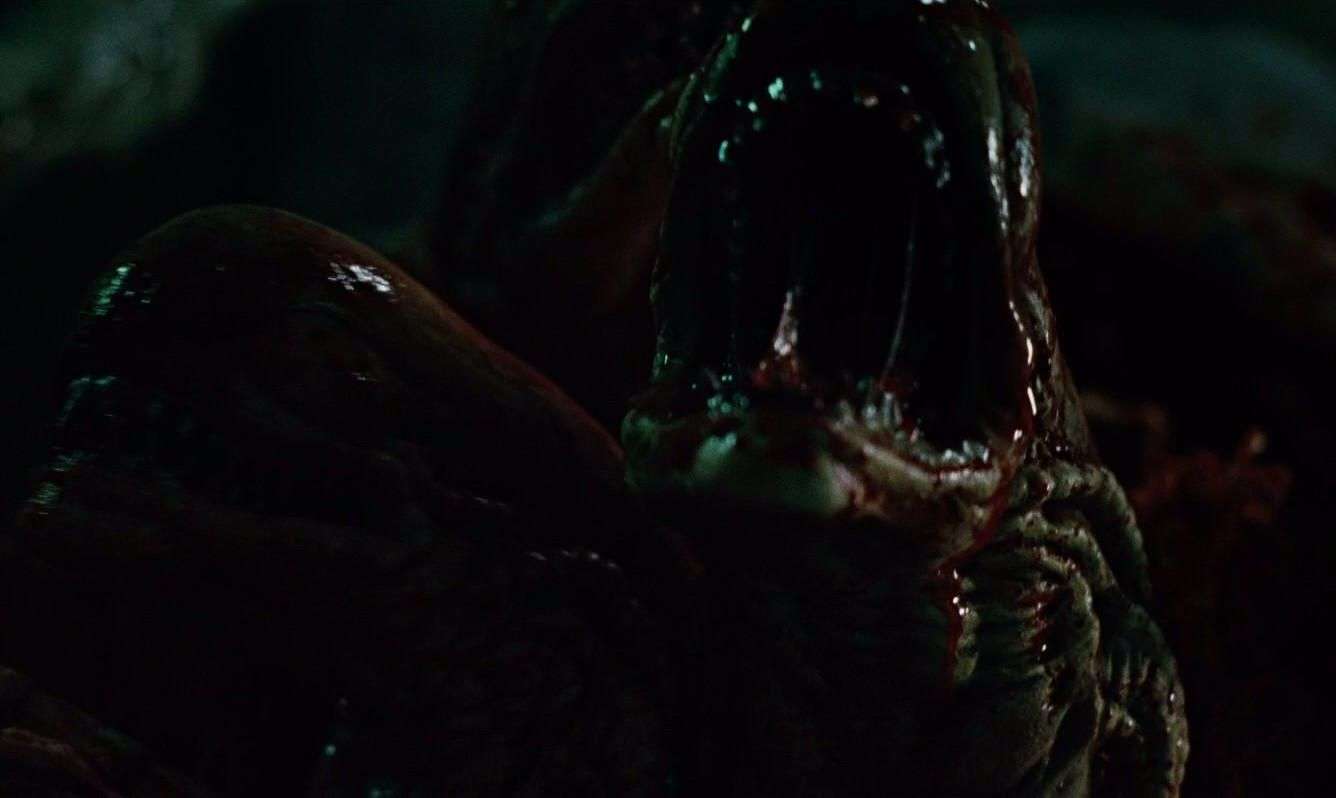
Greg and Colin Strause, also known as The Brothers Strause, directed Aliens vs. Predator: Requiem in 2007, which not only marked their directorial debut but also introduced a terrifying new alien to the franchise. The Bellybursters, which are actually a cluster of Xenomorph children exploding from the victim’s abdomen, are what we’re talking about.
The implanting method seems quite similar to that of a Facehugger; but in this case, it is the Predalien that is impregnating the host, andpregnant human women are the chosen victims. The Predalien literally forces a bunch of embryonic Xenomorphs down the victim’s throats using its mandibles, and let’s not forget that deadly tongue.
Wondering why pregnant women? The implied reason is quite simple; baby xenomorphs growing inside can feed on the unborn child while simultaneously drawing nutrients from the body of the host by attaching themselves to several main organs.
But it is also quite possible that the Predalien, upon seeing a pregnant belly, considered it a much more effectual way of giving birth to aliens.
The implantation procedure, as well as what happens thereafter, is a horrifying sight. Imagine seeing a swarm of larvae explode from the victim’s stomach! This specific Xenomorph type is without a doubt the film’s centrepiece, and this scene in particular is not for the faint of heart.
Xenomorph (Aliens, 1986)
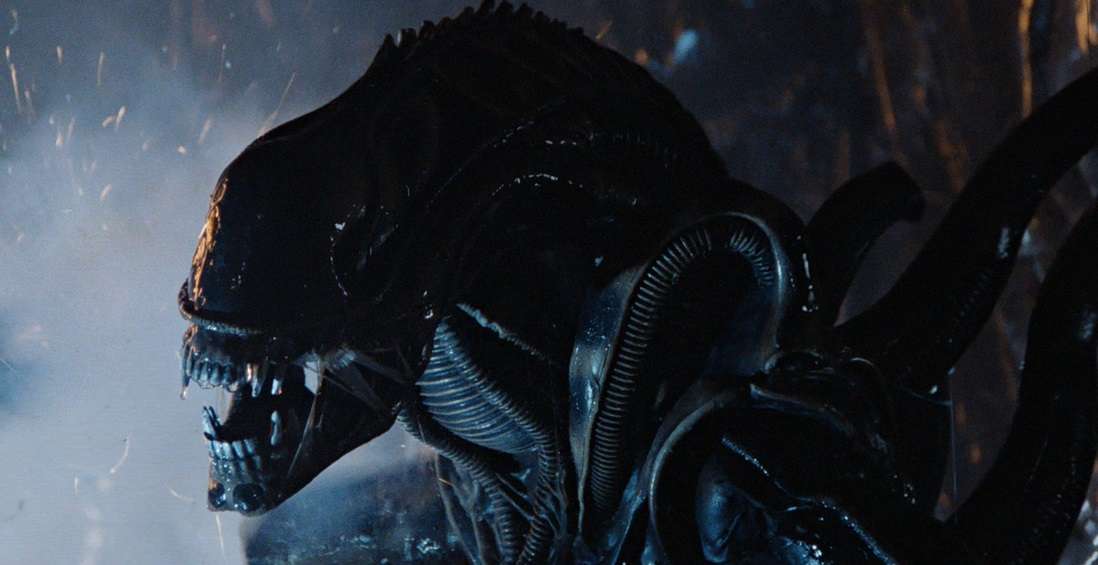
The creature featured in James Cameron’s sequel to the original Alien film has finally been given a name and a makeover. The Xenomorph in the 1986 film is far more evolved than the one introduced by Ridley Scott.
This variation is tough and looks like a soldier, and there are a lot of them in this film. It is normally black in colour, has a textured skull, and a considerably harder head carapace, and stands close to 8 feet tall.
Its lengthy, segmented tail, which has a stinger-like barb with a bladed tip, and its secondary set of jaws inside the mouth are not to be underestimated. From being able to camouflage itself in the hive toeffortlessly breaking down metal pressure doors, it’s deadly even in death – thanks to the ability to drench its enemies with acidic blood.
As such, if killed by any form of weapon, the creature is bound to explode and as a result flood the whole area with its molecular acid. So, you can imagine the impact of such a blast!
These varieties are, without a doubt, intelligent; after all, they are capable of not just planning but also adapting to new situations. For example, the only reason they turned off the power in one region was to gain access to their human prey.
“What do you mean ‘they’ cut the power?” said Private First-Class William L. Hudson. How did they manage to cut the power, man? They’re creatures!” You can’t ignore the fact that they managed to learn how to run the machinery, even if it was just on a rudimentary level.
Finding faults in their enemies’ defences to exploit and managing to creep up on their preyeven when they are on guard and fully alert, these variantsexhibit extreme uses of hostility and aggression,ambushing literally anything non-xenomorphic that crosses their path.
Neomorph (Alien: Covenant, 2017)
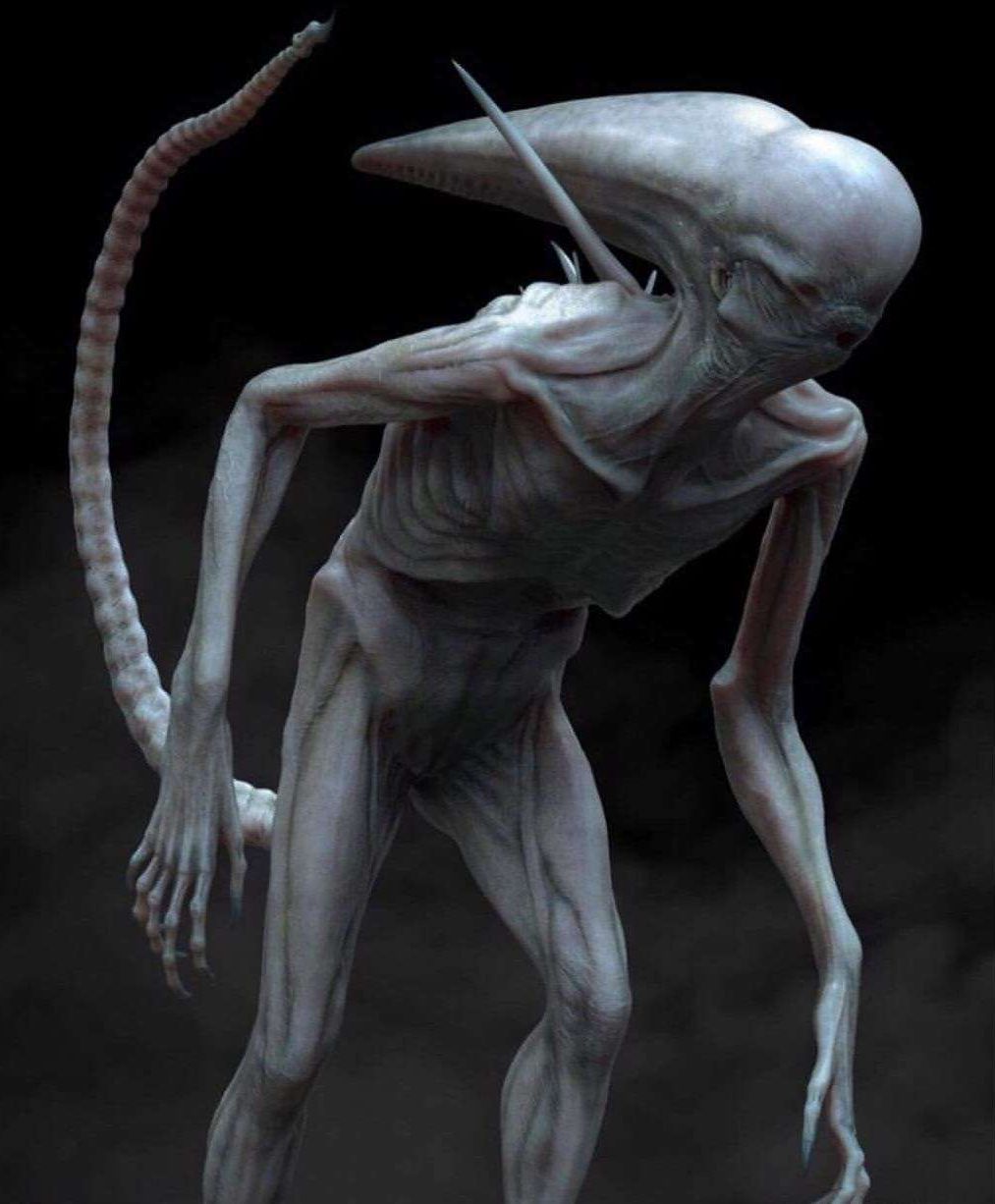
The newest addition to the Alien franchise is the pale-whiteNeomorph that made its first appearance in the 2017 movie, Alien: Covenant, which is not only the third instalment directed by Ridley Scott but also the sixth instalment in the Alien movie series.
It would not be wrong at all to confess that this particular variant of the Xenomorph simply takes the level of creepy notches higher, giving an all-new definition to the meaning of the word.
The embryonic Neomorph lays its eggs inside the live host before bursting out of the back and throat, among other places, with its sharp and pointed head. The Neomorphs are voracious carnivores who feed on their victims’ bodies and can grow extremely quickly. In fact, they have the ability to fully mature in just a few hours.
During their juvenile phase, they are diminutive and four-footed, but when they reach full maturity, they will transform into gigantic, bipedal monsters.
The Neomorphs do not have an extendible inner jaw, instead, they have gums that spread out. Just like the Xenomorph, the Neomorph also flaunts a tail but the latter’s is tipped with spikes andis strong enough to actually tear off a human jaw.
It would be a cardinal sinnot to mention those vicious silvery fangs and its brutally aggressive nature. Also, each Neomorph differs slightly from the other;remember the one with the bony dorsal spikes on the back?It’s pretty hard to forget!
Many of you may not realise it, but the Goblin Shark inspired the entire physiology of the Neomorph, and director Ridley Scott still refers to this variety as the first generation of Aliens. After all, ‘neo’ literally means ‘new and young.’
The Neomorph is amazing; its ability to run straight into the faces of its victims sets it apart from the other varieties. You must see the scenario for yourself, and believe us when we say it is pretty disturbing.
Spineburster (Alien: Covenant, 2017)

Greetings to the latest nightmare that is sure to make you feel sick to your stomach and send a slew of shivers down your spine. Yes, this isn’t very different from prior incarnations of alien bursters seen in other films, but the Neomorph’s birth does inject a new sense of dread and unthinkable horror not only into Alien: Covenant, but also into the Alien genre as a whole.
The Spinebursteris the notorious infant form of the Neomorph that is widely recognized for its horrendous gestation. The process differs slightly from the wayChestbursters emerge from the host body, depending mainly on how the host was infected in the first place.
The Spineburster will eventually take on the characteristics of its host, but these also depend on where it chooses to erupt from.Who can forget that famous scene which has the creature bursting out of Ledward’s spine, showcasing dorsal fins on its back?
It’s no surprise that theSpineburster is a vicious creature, as seen by Karine’s death only seconds after the beast left Ledward’s body. This species, unlike traditional Xenomorph Chestbursters, will not flee its host in search of a safe haven. Rather, it will stay and battle, allowing its aggressive instincts to take over.
Dog Alien / Ox Alien (Alien 3, 1992)
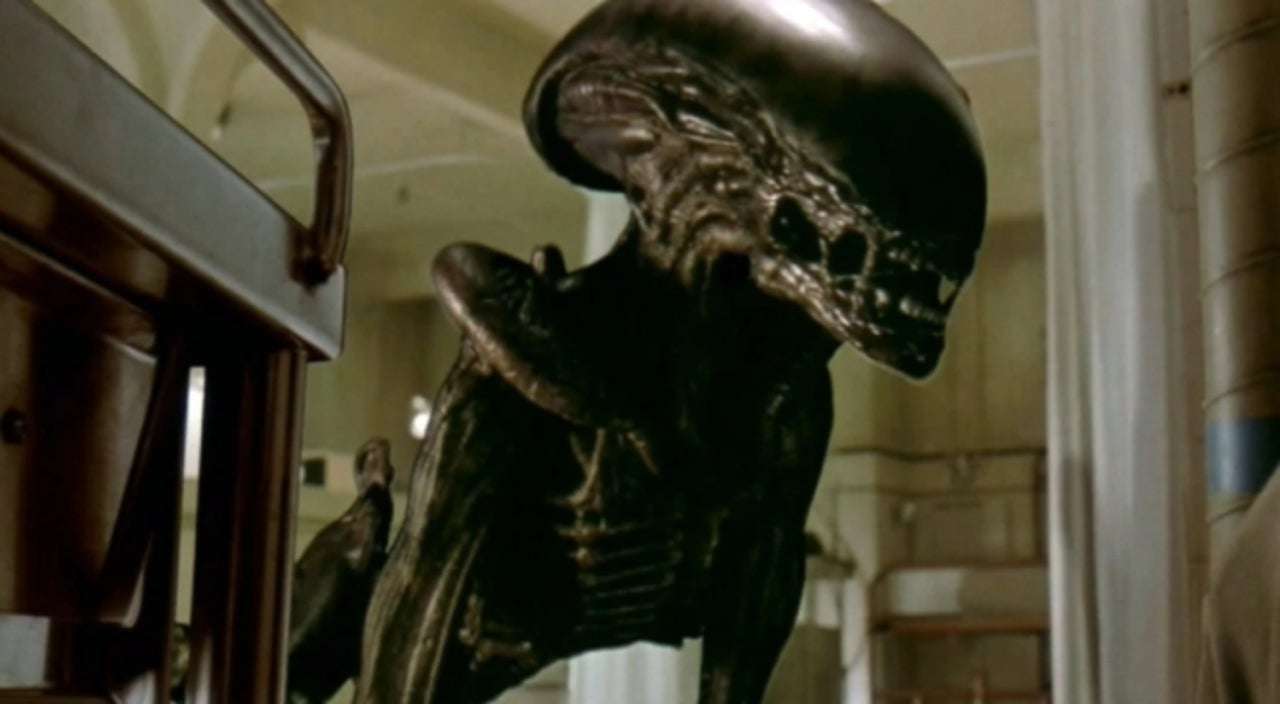
The Dog Alien or Ox Alien, also known as The Dragon, made its debut in David Fincher’s(0.03 to 0.04) Alien 3, the third episode of the Alien film trilogy. The film takes a risk by venturing into uncharted area and demonstrating what occurs when a Facehugger adopts an animal as its host.
While the Dog Alien is in its Chestburster stage, it almost looks like the miniature version of the adult. After growing to full size, it is chieflyquadrupedal, has digitigrade hind legs and is quite prone to using its mouth to maul its prey to death.There’s no denying that this variantis the fastest of the breeds, thus creatinga perfect sense of terror.
To top it all off, now imagine this creature spitting acid from its mouth and reaching a height of around 7 feet 5 inches while standing on its hind legs. Frightful, right?
Do not miss out on this creature, one that is capable of travelling not just on floors but walls and ceilings too!
Predalien (Alien vs. Predator: Requiem, 2007)
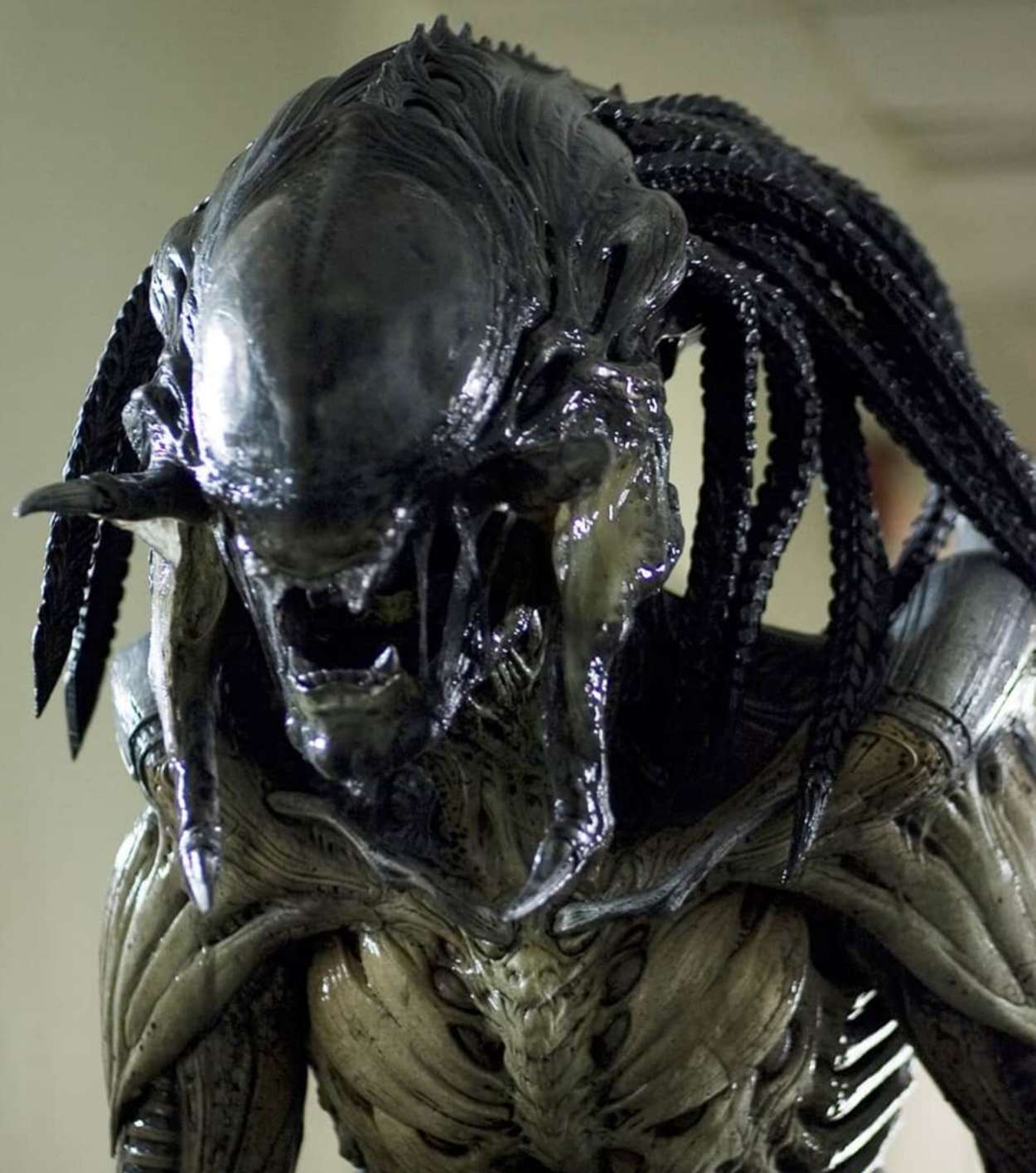
This variation is the consequence of a Facehugger impregnating a Predator, thus no points for guessing. Although a PredalienChestburster makes its initial appearance in the final sequence of Paul W. S. Anderson’s 2004 film Alien vs. Predator, the adult is first seen in the 2007 sequel Alien vs. Predator: Aliens vs. Predator. Requiem.
The Predalien is irrefutably one of the highpoints of the whole movie, showcasing several traits similar to those of its hosts. We are particularly referencing the dreadlocks, mandibles, skin tone and along, thick multi-spiked blades tail.
The Predalien on display here is a young queen that will specifically go after pregnant women, inserting literally hordes of Bellybursters into the victim’s throats. The manner it does sois in a way quite similar to a Facehugger impregnating a host.
But it is definitely not a pretty sight, especiallywith the Predalienusing its mandibles and forcing up to five embryonic Xenomorphs down the victim’s throatsvia its inner jaw proboscis-like tube.
The Predalien is a big and muscular creature with great strength that can easily break through thick concrete. This indicates that it is far tougher than its host, as evidenced by its ability to easily hold down, shove, and overwhelm a Predator. The Predalien is a genuinely terrifying hybrid, and it wouldn’t be inaccurate to describe it an abomination.
Trilobite (Prometheus, 2012)
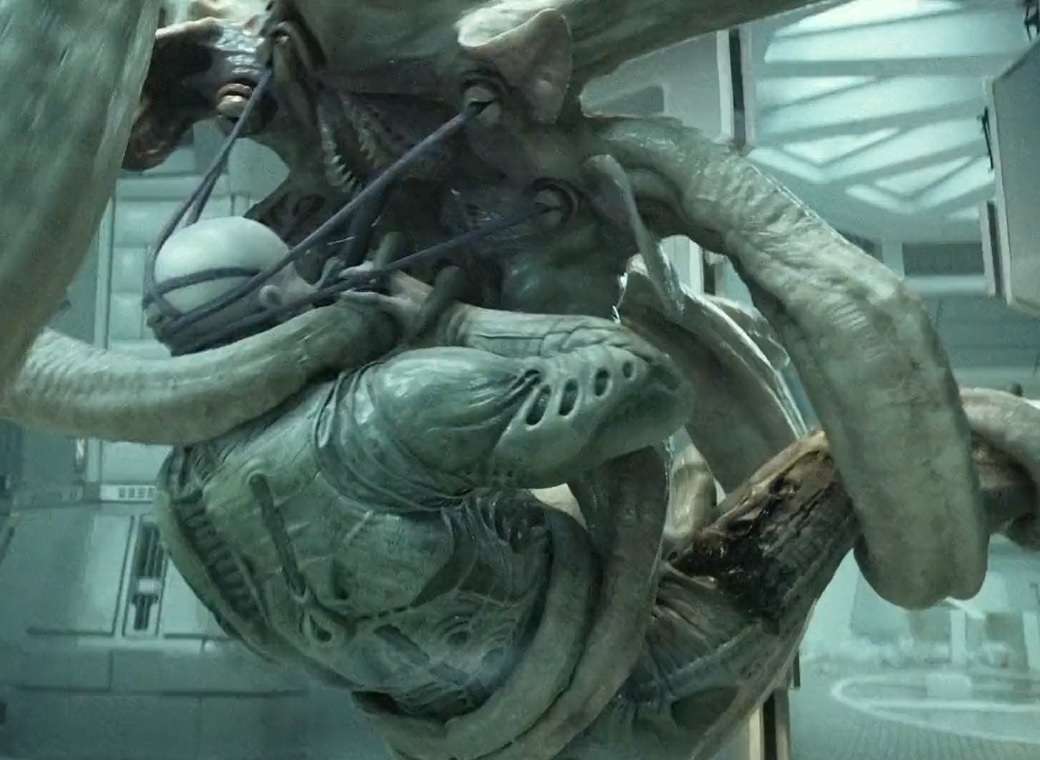

After Charlie Holloway(1.18 to 1.19) was infected by Chemical A0-3959X.91 – 15, often known as the ‘black goo’ or ‘black liquid,’ this monstrous cross between a squid and a Facehugger was born.
Holloway then had a sexual relationship with Elizabeth Shaw, which resulted in an extraterrestrial swiftly growing inside her body. Despite the fact that Shaw had the creature surgically removed and assumed it was dead, it survived and evolved into a massive Xenomorph Facehugger whose sole objective was to find and impregnate a host.
Unlike a Facehugger, the Trilobite had quite the abilityto grow, which was clear right from when it was surgically extracted from Shaw’s womb. A creature so huge is strong enough to overpower an Engineer.
It even possessed numerous large tentacles along with smaller retractable tendrils to hold its victim steady while violently and forcibly implanting alien embryosin the body.Right in the middle of the creature’s body is a huge toothed mouth, inside which was a giant feeding tube that was mainly used to inseminate the host. It is this endoparasitoid larvathe Trilobite implants which will eventually evolve into the Deacon, though the Trilobite itself dies after the impregnation.
Fifield Mutation (Prometheus, 2012)
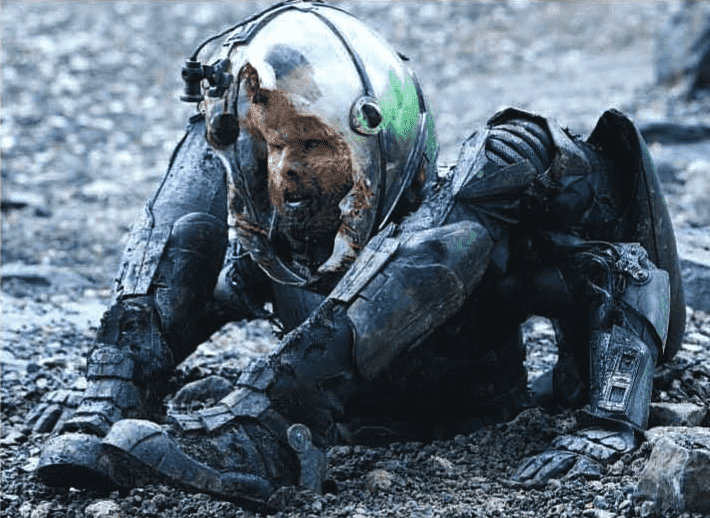
So, if a human is ambushed by a Hammerpede and then infected with the ‘black goo’ or falls straight on their face into a puddle of the ‘black liquid,’ that person would transform into a horrific, mutant monster.
This is exactly what happened to geologist Sean Fifield in Ridley Scott’s Prometheus, and despite the fact that his character used his utility knife to cut off the Hammerpede’s head, his helmet was showered with acid.
The resulting skull-faced xenomorph is extremely difficult to kill, has superhuman strength, and exceptional leaping abilities. Fifield’s mutation initially led him to survive not only being run over but also being shot right in the head. He was ultimately destroyed by a flamethrower shot and crushed to death by the armoured personnel carrier also known as the RT Series Group Transport.
Many of you might not know this but the original mutation was supposed to look quite different to the end result that the movie has on display. The monster was supposed to have a translucent cowl covering its extended head.
Even John Spaihts’ initial script, which was actually titled Alien: Engineers,featured a rather more extreme version of Fifield, sporting additional dorsal tubes emerging from his suit and big clawed talons sprouting from his hands. Terrifying, enough?
Deacon (Prometheus, 2012)
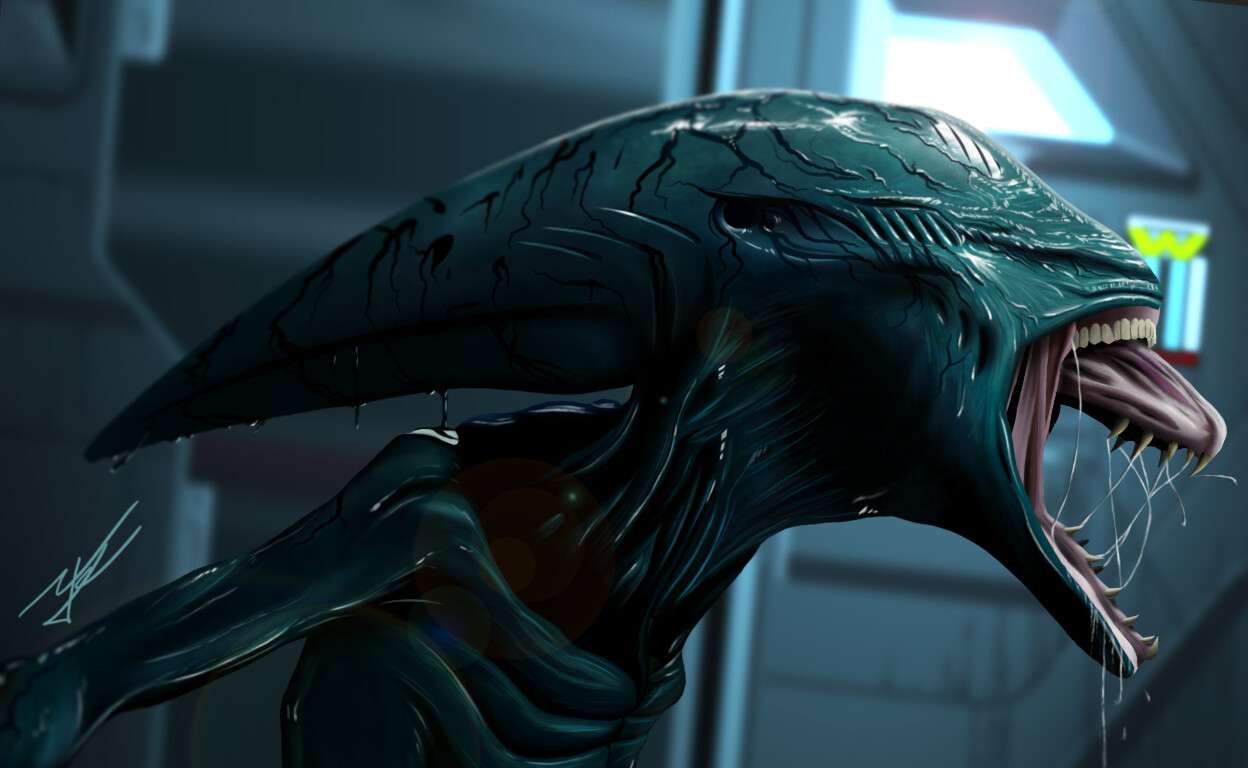
A Trilobite attacked and impregnated an Engineer, resulting in the Deacon. A blue smooth body, four fingers, a thumb, plantigrade legs, and a mouth with two sets of teeth distinguish this Xenomorph-like monster.
While the upper jaw bears teeth comparable to those seen in herbivores, the lower and inner jaws have fewer sharp, lethal fangs. Even the lower jaw expands outwards, giving the appearance of a second set of gums. The Deacon, unlike the Xenomorphs, does not have a tail and instead has an extended, sharp, and pointed head.
This variantis also reported to be born fully developed as an adult and the fact that it aggressively bursts from the chest of the Engineer shows its prominent similarity to the Xenomorph.
What makes the Deacon remarkably different from the rest is the manner in which it uses the sharp back of its head to literally tear its way out of its host, and the way it actually roars. Also, the fact that the host is already dead even before the creature is born highlights its ominous presence. This chillingly pointy-headed creature was specifically named after a bishop’s hat.
Hammerpede (Prometheus, 2012)
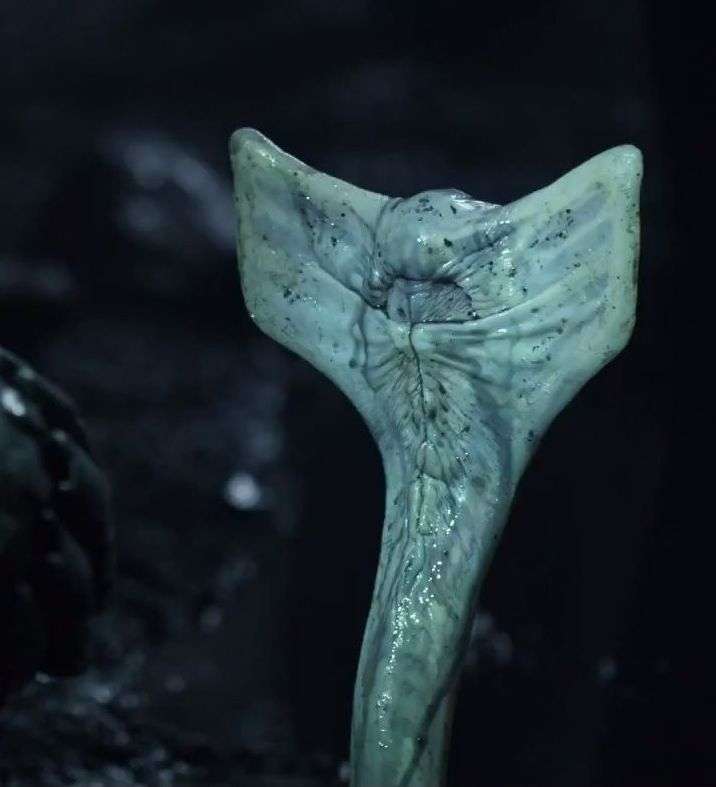
This extraterrestrial species was primarily the consequence of many native LV-223 worms coming into touch with the ‘black goo’ and morphing into serpent-like creatures with winged bodies. Hammerpedes have a pale, white-grey skin that appears to be translucent, and they can grow up to 4 feet in length. Their crests resemble snakes, particularly cobras, and can be folded in and out around the mouth.
Flaunting an unbelievable amount of strength and possessing acidic blood, these creatures are also quite capable of regenerating severed parts of their body within a matter of a few seconds. Remember the scene where Fifield tried to cut off the head of the Hammerpede? Well, we all know how that turned out!
Also, you’ll be surprised to learn that a similar insect does exist in the real world. The organism eats other worms, snails, and insects and is carnivorous. It’s known as a hammerhead worm, and it’s capable of repairing its severed body parts in a matter of weeks. When split in half, it can even regenerate a new head and body.
Newborn (Alien: Resurrection, 1997)
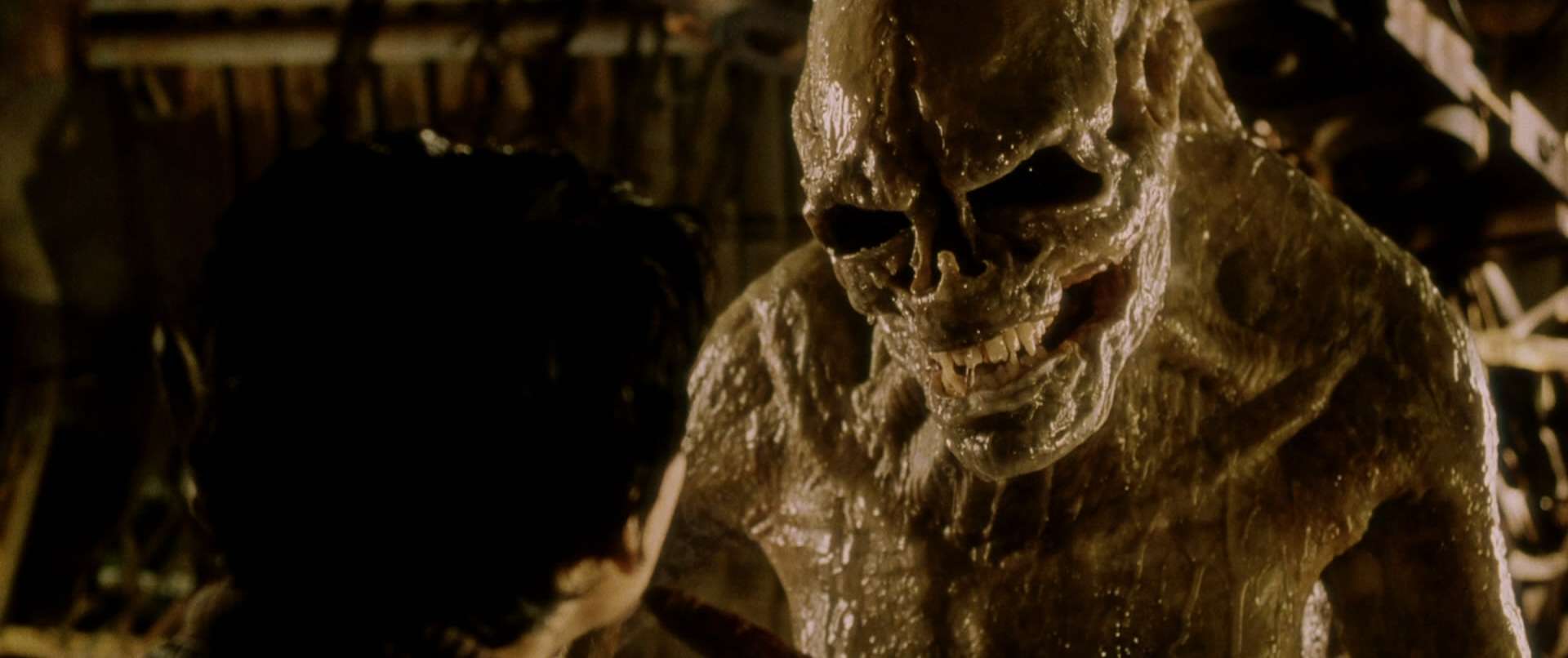
Make the mistake of assessing this variety solely on the basis of its fairly innocuous name. It may appear to be a youngster, but it is well aware of its lethal intents.
When scientists were attempting to retrieve DNA from the deceased Ellen Ripley and the Alien Queen inside her, severe genetic tampering happened, resulting in the birth of clone aliens with minor human features. As a result, the cloned Queen gives birth to a xenomorph-human hybrid.
TheNewbornappeared much larger, boasting pale, translucent skin, an elongated head, a skull-shaped face with eyes, a nose, a human tongue and no tail. There are many who have addressed the Newborn as one of the strongest aliens to have appeared in the Alien franchise.
Remember the scene where it fails to bond with its Queen mother and so it ends up decapitating her with just a single swipe? For a variant that is just born to display such strength is both impressive and terrifying.
Later, it is seenimprinting on the Ripley clone, even licking her as a gesture of affection. Too bad that it eventually got brutally sucked into space through a tiny hole, a feat which we have Ripley 8 to thank for.
Baby Xenomorph (Alien: Covenant, 2017)
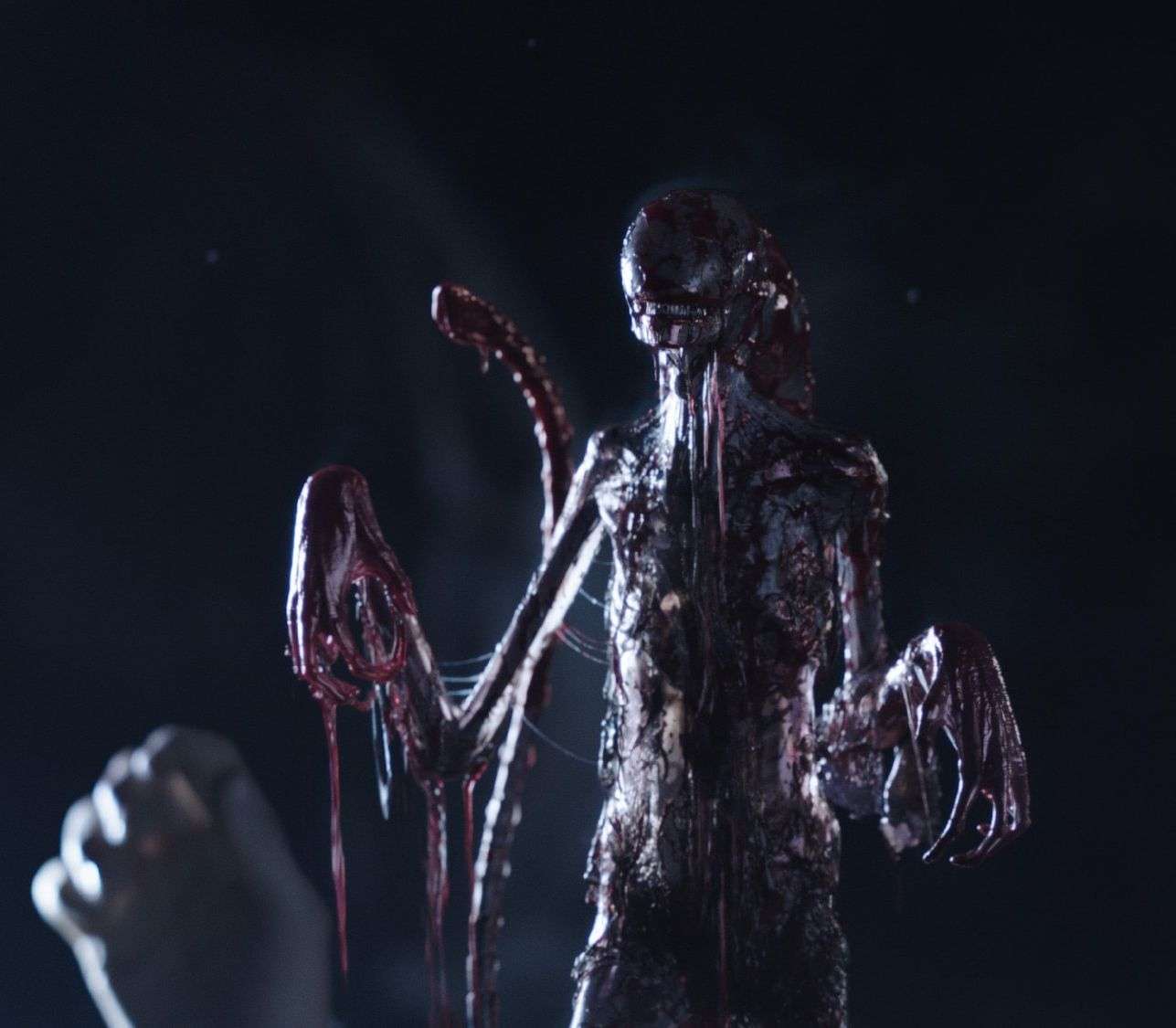
The infant version of the fully developed alien is this variety. This form shares several characteristics with the Xenomorph XX121, such as a bipedal humanoid stance, an elongated cylindrical skull, a smooth domed carapace, and a segmented, blade-tipped tail.
Formed as a result of eggs that were created by the android, David,the baby is seen recreating the popular Chestburster scene, exploding from Christopher Oram’schestin Ridley Scott’s Alien: Covenant.
Emerging, the creature undergoes an instant transformation and thanks to the species’ enhanced growth, it is fully developed right after being born. It is actually pretty hard to disregard the Baby Xenomorph screeching in front of an enchanted David following its birth and you have to experience the scene yourself to understand the gravity of the particular act on display.
